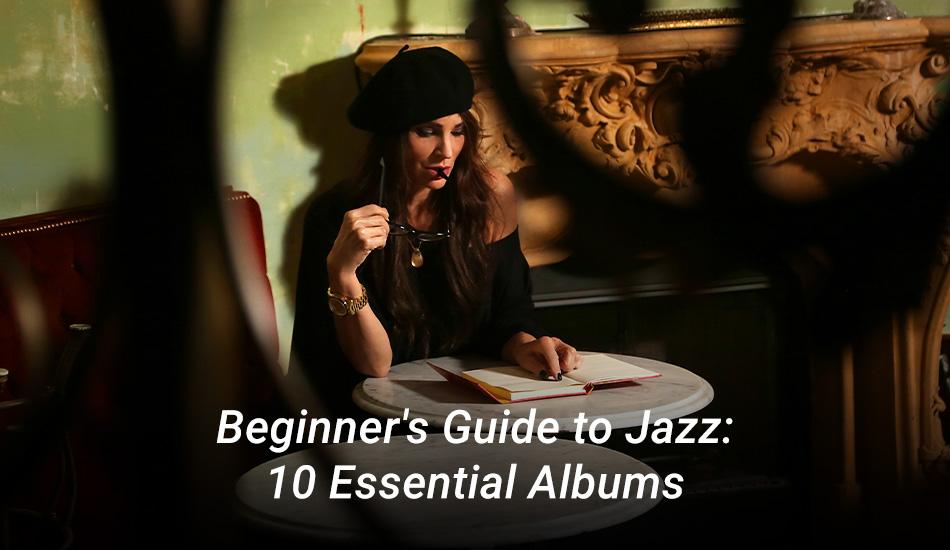
by dynamite | Mar 22, 2023 | Blog
The jazz genre is unlike any other genre. It can sometimes be polarizing, but once jazz lovers understand why it is so beloved, they will never look back. Listen to jazz records like on a journey with the musicians as guides. The following are the top 10 jazz albums:
Louis Armstrong: Satchmo – Symphony Hall (Decca, 1951)
Louis Armstrong’s career got a new lease on life when he performed with his All-Stars in the early 1950s. Satchmo: Live at Symphony Hall became one of the greatest jazz albums ever. Louis Armstrong and the all-star band played several sets at Symphony Hall that evening, resulting in a two-LP set that Decca released in 1951.
Billie Holiday: Billie Holiday Sings (Clef, 1952)
Born in Baltimore, Billie Holiday made jazz famous through her languid voice. In 1952, Clef Records released the jazz singer Billie Holiday’s 10-inch LP album Billie Holiday Sings, her first album released by the label. Clef Records released two albums separately in 1952 and 1953, seven years before Holiday’s death. The first album, Billie Holiday Sings, was released in 1952, followed by an evening with Billie Holiday in 1953.
The Quintet: Jazz At Massey Hall
A modern jazz super group called The Quintet was formed on May 15, 1953, specifically for a one-off concert at Toronto’s Massey Hall. This concert was later released as a double-live album called The Greatest Jazz Concert Ever. The musicians performing at Jazz at Massey Hall were regarded as foremost instrumental innovators in the bebop movement at the time of this concert.
Count Basie Orchestra: April In Paris (Verve, 1957)
The singer was born in Red Bank, New Jersey, but like Duke Ellington, he adopted aristocratic titles for his stage names and played an essential role in the swing big bands of the 1930s. In April In Paris, one of the best recordings by the Basie band, the band is distinguished by its swagger, verve, finesse, and power.
John Coltrane: Blue Train (Blue Note, 1958)
Blue Train is the essential recording that established Coltrane’s sound as his own. While it is not the preferred recording, it is an excellent place to begin an exploration of Coltrane. The saxophonist’s journey from a bar-walking blues player to a jazz pathfinder was miraculous. After quitting his drug addiction forever, Blue Train was his first truly great album.
Cannonball Adderley: Somethin’ Else (Blue Note, 1958)
Cannonball Adderley was one of his generation’s top saxophonists; this is his best record, and Miles Davis played an essential supporting role. It is an essential recording for any Blue Note music collection. This LP is essential for any jazz lover, featuring Adderley, Davis, and Art Blakely on drums. However, he found his unique voice on his instrument, as this 1958 Blue Note album illustrates.
Chet Baker: Chet (Riverside, 1959)
In 1959, jazz trumpeter Chet Baker released Chet. Sometimes it is referred to as The Lyrical Trumpet of Chet Baker. Chet Baker recorded tracks for Riverside Profiles in the late ’50s as a trumpeter. These recordings compare to Baker’s legendary Pacific Jazz recordings. Riverside Profiles is an excellent introduction to this part of Baker’s career, even if most Baker fans already have the whole album.
Miles Davis: Kind Of Blue (Columbia, 1959)
Some of the best albums are judged by their music. Other times, we look at sales figures. If a listener searches for the best jazz albums list, it is hard to find one that does not include Kind of Blue at the top. There are many reasons why Miles Davis is regarded as the king of jazz.
The modal jazz style was invented by Davis, who broke the mold by opting for a more relaxed approach that established an entire subgenre.
Jimmy Smith: Back At The Chicken Shack
Jimmy Smith released Back at the Chicken Shack on the Blue Note label in 1963. The album was recorded in the same session, As seen in his previous album Midnight Special. Blue Note’s 1960 album Back At The Chicken Shack is listed among the 1001 albums everyone should hear before they die. The title track features a long, lazy blues featuring tenor saxophonist Stanley Turrentine, guitarist Kenny Burrell, and drummer Donald Bailey.
Herbie Hancock: Maiden Voyage (Blue Note, 1965)
Herbie Hancock’s fifth album, Maiden Voyage, was released by Blue Note Records on March 17, 1965. Initially released by Blue Note Records on March 17, 1965, Maiden Voyage is Herbie Hancock’s fifth album. The album aims to create a sense of oceanic harmony with Hancock, Coleman, Hubbard, Carter, and Williams. In 1999, the album was placed into the Grammy Hall of Fame.
Final words
Here is a great way to explore the genre through the best recording album for beginners. Jazz often has more space in the music than rock, hip-hop, or electronica. Many talented people are working in the field of music, according to Sylvia Brooks, the best female jazz vocalist today. Jazz is one of the essential American art forms, and it is vital to keep those great voices alive both now and in the future.
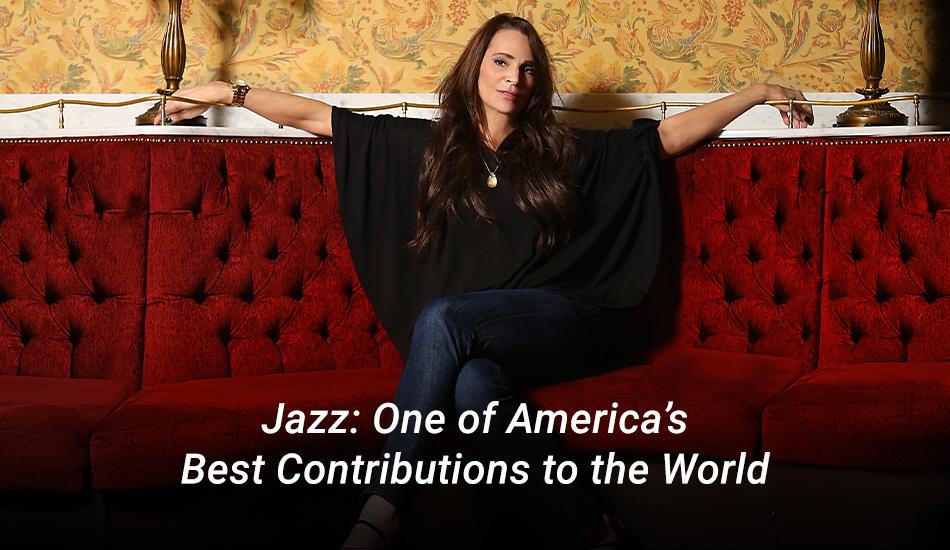
by dynamite | Feb 25, 2023 | Blog
Overview
Jazz music captures various emotions and incorporates influences from America and Africa to create a form of music that is both an art form and an expression of the soul.
A rich history of jazz affects nearly every aspect of American life. This effect is due to the style and social movements of the music.
Feeling the Blues
Blues is a style of expression that depicts things that are very painful, deep, and poignant, yet it has to underline ease. Because of the music, the most fantastic blues transform pain into something light. As its name implies, blues music is about heartache, pain, struggles, and triumphs over injustices.
The Birth of Jazz Music
In the early 20th century, jazz music developed on the streets of New Orleans, Louisiana. Improvisation is a crucial element of music. This flexibility and room for creativity and expression are why it is widely prevalent among musicians. It is a blending of various cultures, emotions, and skills that occur over time. New Orleans, the Cradle of jazz, was the birthplace of jazz in 1902. With so many cultures blended in America, it’s no wonder jazz music was born here.
Giants of Jazz Music
American music has been shaped by hundreds of American jazz singers, musicians, and innovators over the years, from blues and spirituals to swing, Bebop, Cool, and Free jazz. Louis Armstrong was a popularized jazz Singer with his compelling improvised jazz solos.
Singers like Billie Holiday, Ella Fitzgerald, and Nina Simone are jazz artists. Musicians like Grover Washington Jr, Chick Corea, and Herbie Hancock are some of the best jazz artists of the 20th century. Sylvia Brooks’ greatest jazz album, Dangerous Liaisons, has received incredible critical acclaim.
Various Forms
There are many types of jazz. Jazz music has evolved and undergone various changes; there has been a lot of radical innovation. The lively beat of Swing music emerged during the Great Depression, while Gypsy jazz, Kansas City jazz, and Bebop emerged by the 1940s. Various forms emerged later, such as West Coast jazz, cool jazz, Afro-Cuban jazz, Latin jazz in the 1950s, and jazz rap in modern times.
- Swing: One of the most notable things about swing jazz was that it paved the way for forward propulsion.
- Bebop: The Bebop had a complex composition, heavy use of instruments, and was too fast, loud, and exciting.
- Hard Bop: Among the most popular musical genres loved by people who like dark music, Hard Bop concentrates a lot on drumming.
- Cool Jazz: Cool jazz was popular because of its mellow vibe and slow tempo. It had a very harmonious feel and a plodding beat.
- Modal Jazz: In the modern era, we saw the emergence of other forms of jazz, while Modal Jazz’s bass was its musical piece.
- Free Jazz: The Free jazz musical style broke away from convention. Free jazz had no such rules.
- Post Bop: Post Bop was one major jazz musical genre heavily influenced by Hard Bop, Free jazz, Modal jazz, and Bebop.
- Smooth Jazz: Smooth jazz became popular in the 1980s and 1990s.
- Jazz Fusion: Jazz Fusion was a fusion of traditional jazz music with funk, rock, and R&B elements.
- Avant-Garde Jazz: Jazz music of this type was introduced in the 1950s and became popular.
Influence of Jazz
Music from jazz has inspired us and given birth to the drum set. New York is the best place to live jazz. It is easy to see how acts such as these influenced the best music of the 20th century. From the Beatles’ “Honey Pie” to Pink Floyd’s, jazz has influenced hip-hop artists like Q-Tip. Finding a person who has not been affected by jazz at least once is nearly impossible.
Conclusion
Jazz was developed in the United States by African-American communities. Additionally, jazz allowed women a great outlet to express themselves. In the decades following the jazz era, the mediums of song, dance, and fashion continued to change the lives of Americans across the country.If you are looking for bracelet. There’s something to suit every look, from body-hugging to structured, from cuffs to chain chain bracelet and cuffs.
The development and spread of jazz music resulted in different styles influenced by cultures worldwide. Jazz music includes dangling, group communication, voice development, and improvisation; these elements play an essential role.
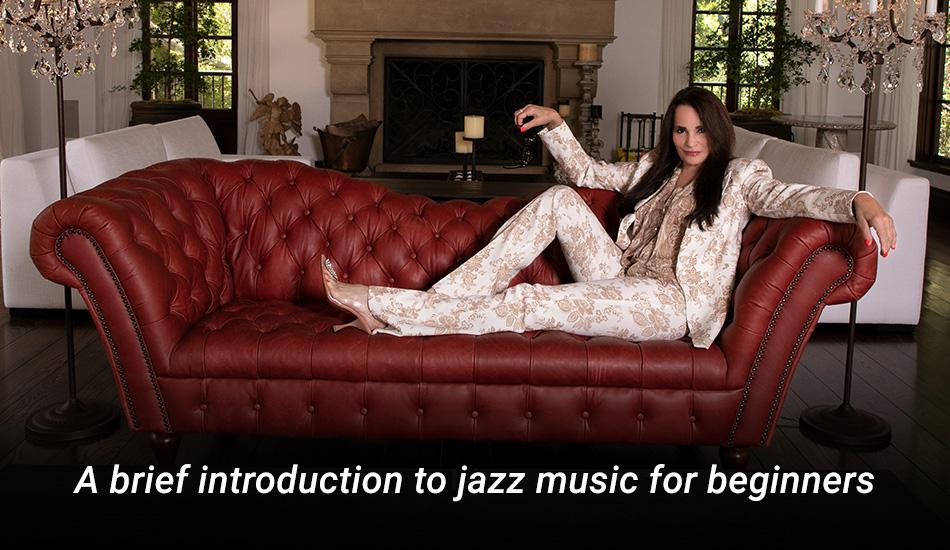
by dynamite | Feb 14, 2023 | Blog
As a symbol of African-American freedom, jazz has evolved into a genre now considered American classical music since its humble roots in the late 19th and early 20th centuries. According to popular belief, jazz combines West African and European music. Jazz enthusiasts continue to enjoy this soothing genre. It’s always possible to learn about jazz. Below is a brief introduction to jazz music.
The Origins of Jazz
It is essential to understand jazz’s origins to understand what it is. In the 1920s, African Americans were only allowed to own drums in New Orleans, the birthplace of jazz. It was a port city that was a hub of social activity. Through the years, jazz has evolved into various types as musicians from national, regional, and local cultures contributed to this genre. The 1940s were the era of Bebop, while the 1960s and 1970s saw jazz-rock fusions become increasingly popular.
Characteristics of Jazz
The characteristics of jazz depend on its type, including distinctive rhythm, harmonic sophistication, and improvisation.
Distinctive rhythms: In traditional jazz rhythms, the first note in an eighth note pair is given extra emphasis, while the second note is lighter as it “swings” toward the following note.
Harmonic sophistication: In jazz music, three-note triads are rare, and most jazz chords feature the seventh chord tone.
Improvisation: The spirit of improvisation unites nearly all forms of jazz music. Every jazz band member can improvise over a jazz composition, from lead instruments to rhythm sections to vocalists.
Elements of Jazz Music
It is best to explain the eight essential elements of jazz music for beginners to help them understand this unique music genre. A jazz ensemble may use any of these elements depending on the type of jazz they perform.
Drums: The drums are the heart of jazz. Some essential jazz drums are the kick drum, the hi-hat, the snare drum, the low and high toms, and the crash.
Piano: Throughout jazz’s history, the piano has played an essential role in enhancing harmony and improvisation.
Guitar: Unlike what many people think, almost every jazz band likes to use the guitar.
Trumpet: A trumpet has a vibrating mouthpiece made of brass. Louis Armstrong made the trumpet the mainstay of jazz.
Bass: An upright jazz bass creates a unique, pulsating sound by plucking the strings instead of using a bow.
Saxophone: The saxophone is the only instrument that allows jazz players to express their musical notes quickly.
Trombone: This brass instrument has been used in jazz music since the genre’s earliest days.
Vocals: The vocal jazz style derived from the blues and emerged in the early twentieth century.
The Greatest Jazz Artists of All Time
Jazz music history should mention some iconic jazz singers. All of these artists have influenced different styles of jazz music, making it more popular today than ever. Here are a few artists’ names:
Louis Armstrong: As one of the most influential jazz artists and a brilliant trumpeter, he was probably the first well-known jazz star. His harmonic music was precise and melodic.
Davis: As a legendary trumpeter, he played in most classic jazz bands of the 1950s and 1960s. Throughout his career, he developed a distinctive jazz style.
Billie Holiday: A fabulous jazz vocalist with a soulful voice who had a social and functional impact for a long time.
Ella Fitzgerald: the most iconic jazz singer. She was blessed with impeccably clear vocals, making her a unique singer.
Sylvia Brooks: she is a fast-rising Jazz vocalist. She brings her audiences a mesmerizing combination of smooth, articulate vocals backed by organic and soulful instrumentation.
Conclusion
Jazz is music that can shape qualities by giving courage and preparing artists to improvise and innovate. Jazz education is essential for young and old minds alike. Jazz music songs are the most stimulating genre of music. For those who are beginning to explore jazz music, this short guide will help them to start.
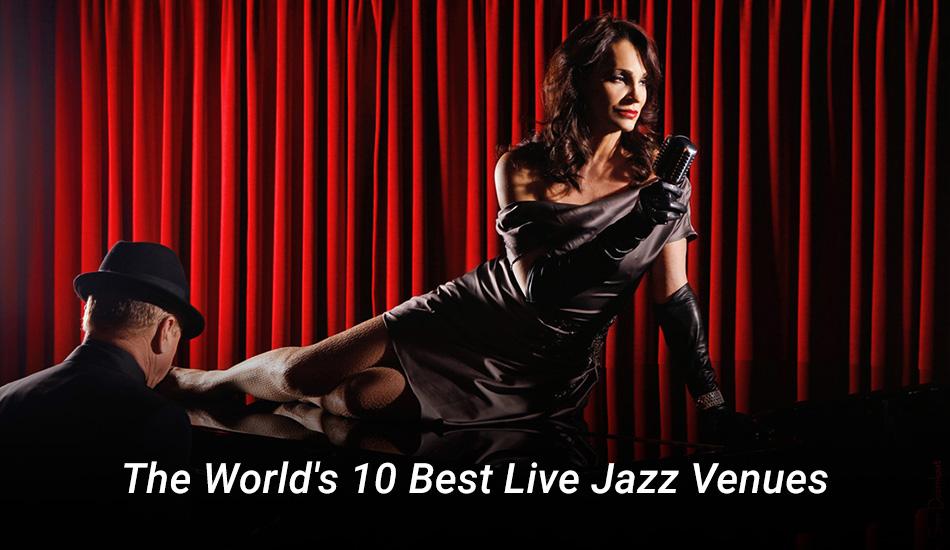
by dynamite | Jan 23, 2023 | Blog
There are roots in blues and ragtime in the jazz genre, which originated in the late 19th and early 20th centuries in African-American communities in New Orleans. Swing, blue notes, complex chords, call-and-response vocals, and polyrhythms characterise the jazz genre. Jazz is based on European harmony and African rhythmic rituals. Throughout the years, jazz has spread like wildfire worldwide with unique jazz bars and festivals.
The following are 10 best places to listen to jazz live.
New Orleans
There are countless jazz clubs in New Orleans. The Spotted Cat Music Club is the place to be among all those jazz clubs. There are three jazz shows a day, seven days a week, so this music club is perfect for enjoying music with dinner. The music club closes at 2 am, so everyone in the club can enjoy the best jazz songs.
Long Beach
At Rainbow Lagoon Park in Long Beach, California, the Long Beach Jazz Festival is the longest-running jazz festival in Southern California. Many famous jazz musicians perform contemporary jazz, fusion, R&B, gospel, funk, soul, and blues at this festival.
This festival offers VIP seating in a scenic lagoon with various food and entertainment options. Rainbow Promotions organise the festival. In addition to the festival, the Long Beach Jazz Festival Celebrity Golf Tournament is held annually.
New York City
A jazz lounge in the West Village, Fat Cat, is suitable for those looking to catch a break from a hectic schedule. With Juilliard nearby, the music scene in New York City is ideal for anyone looking for a break from a busy schedule. Besides its multiple live jazz shows a night, Fat Cat Lounge offers pool tables, ping-pong, and more games to keep the party lively.
Chicago
There are many great places to see jazz in Chicago, but the Jazz Showcase, a 170-seat venue in the South Loop, is one of the oldest. Since 1947, the Segal family has owned and operated the place. Today, Joe, who is 90 years old, collects the covers and greets jazz lovers as they walk into the showcase. This venue still hosts talented local, national, and international acts seven days a week. Children will enjoy a Sunday afternoon at the museum.
Pittsburgh
Pittsburgh’s Hill District neighbourhood has some of the hottest jazz venues in the country. Many venues have long since closed, but their legacy lives on at Little E’s, Andy’s, and James Street Gastropub. Besides Pittsburgh Jazz Live International, the city hosts a summer jazz festival that is less hectic than New Orleans’ Jazz Fest.
Washington, D.C.
Live music is abundant in the nation’s capital, but I especially enjoy visiting D.C.’s Blues Alley, the oldest jazz club in the country. As of 1965, this renowned “concert hall” has showcased artists such as Sarah Vaughan, Nancy Wilson, Charlie Byrd, and Maynard Ferguson. In Georgetown’s 18th-century red brick carriage house, visitors will feel as if they are right in the middle of the 1920s and 30s jazz scene.
Kansas City
Jazz and the blues are significant attractions in Kansas City, where over 40 clubs regularly feature jazz performances. This city is home to the American Jazz Museum, which has both permanent and rotating exhibits throughout the year.
Paris
There are many jazz clubs in Paris and bars all over the city, so it’s easy to find Live jazz available at three distinct venues on the Rue Des Lombard. The well-received menu and creative cocktails make it one of the most popular places in Paris for jazz lovers.
Montreal
The history of Montreal and jazz began in the 1920s. Jazz clubs and bars became popular hangouts for musicians and fans. Montreal has continued to be a centre for jazz music with its countless clubs and the world-famous Jazz Festival.
It is the largest and most famous jazz festival in the world. It features hundreds of musicians and offers free shows for a 10-day-long jazz party starting in June.
Cape Town
Various jazz performances are showcased in March at the Cape Town International Jazz Festival. It is the world’s fourth-largest jazz festival. Besides being the most prominent jazz festival in Africa, Cape Town has a variety of fun jazz-related events. Cape Town is a fascinating place to visit for jazz fans.
Conclusion
Jazz clubs are venues that showcase live jazz music as their primary entertainment. “Nothing but the best in jazz” is what the Los Angeles Supper Club provides. Sylvia Brooks plays the lead role on the recent recording album “The Arrangement.” She transports audiences to the dark corners of the human heart, where lust, love, and loneliness struggle for primacy. Her erotic, passionate, and somewhat ambivalent songs appeal to audiences. Sylvia Brooks is one of the most famous American jazz singers from LA.
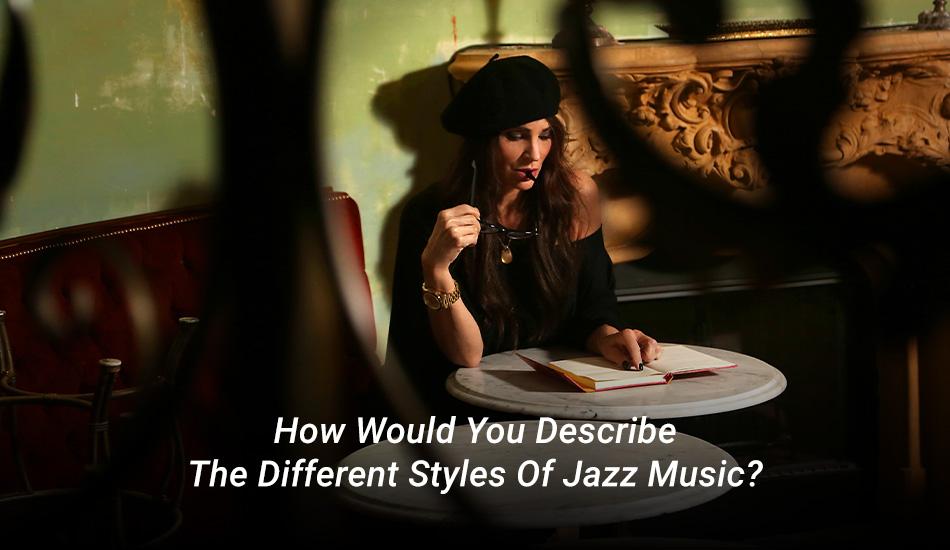
by dynamite | Jan 12, 2023 | Blog
Jazz music is one of the vast genres in which improvisation plays a significant role. Soul-soothing and emotional healing are two of the many benefits of jazz. Beginners will notice that jazz music is rhythmic, has a variety of forward momentum or swings, and uses bent or blue notes. Jazz music has a unique “call-and-response” structure, which makes it different from other genres.
Jazz music songs are a powerful way to express a person’s deepest emotions. A variety of jazz styles can be observed and are listed below.
Swing
Swing jazz has a dynamic style and performs at least 10 to 16 pieces. The popularity of music returned in 1930. Swing jazz differed from other types of music because it did not limit itself to large ensembles. People began to connect with music, which eventually grew in popularity. This traditional jazz style has evolved into a popular dance music style.
Bebop
Bebop’s characteristics are fast, loud, and exciting jazz music. However, it is heavily influenced by Swing. Such an old jazz style emerged in the 1940s when prominent musicians like Charlie Parker, Thelonious Monk, and Dizzy Gillespie began playing.
Jazz musicians had complete freedom to create music that suited their needs. Bebop was a highly complex form of jazz music; due to its heavy instrumentation, complex composition, and excessive tempo, it recently received much-deserved attention.
Hard Bop
Hard Bop is one of the most popular genres of music, loved by people who love dark music. Its focus is mainly on the drums. During the 1950s and 1960s, jazz music with gospel-like chords and blues-inspired melodies was known as Hard Bop. It focused on deep, soulful pitches.
Cool Jazz
Cool jazz is a musical style that evolved as an alternative to Bebop. Cool jazz had a very harmonious vibe and a slow tempo, making it popular. California’s casual attitude influenced this music. Many artists contributed significantly to the rise of Cool jazz music, including Gerry Mulligan, Stan Getz, Paul Desmond, and Dave Brubeck.
Free Jazz
In the early 1960s, Free jazz was the first jazz movement to break from convention. It is a modern jazz music style that was born in New York. Jazz music follows specific rules, but Free jazz does not. Any parameters did not bind the musicians, so everything proceeded according to their preferences. The main characteristics of free jazz are improvisation and heavy modulation.Experience the flavor of iGet Vape and iGet Bar in Australia! Enjoy a smooth vape with rich, delicious flavors while discovering competitive shisha prices. Elevate your vaping experience today and savor every puff!
Modal Jazz
The development of Modal jazz coincided with the modernization of jazz. The Modal jazz bass was played by John Coltrane and Miles Davis, featuring heavy mode modulation and a few chord changes. There is a complex use of instruments and chord progressions, which had not been seen before.
Post Bop
During the 1960s, Post Bop became one of the most prominent jazz music genres due to its heavy influences from Hard Bop, Free jazz, Modal jazz, and Bebop. It was also similar to Free jazz in that it had no conventions; however, it was heavily influenced by other jazz musical genres, so it had to be constrained a bit. Abstract structure, odd rhythms, and extended solos are some of the most outstanding features of this jazz style.
Smooth Jazz
Smooth jazz was created during the 1980s and 1990s when Jazz, Pop, and Lo-Fi R&B merged. Due to its light-listening characteristics, this 1990s jazz musical style appealed to a large crowd. It featured various instruments, including drums, electric bass, saxophones, and synthesizers. It is characterized by a subtle rhythm and grooves that appeal to the audience’s needs. A key characteristic of smooth jazz is its improvised nature.
Jazz Fusion
The Jazz fusion style differed from the jazz music style because it incorporated components from funk, rock, and R&B. It was also known as “Progressive Jazz Music,” as it fused funk, rock, and R&B music elements. Rock’ n’ Roll was famous in the 1960s. Many artists contributed significantly to the growth of Jazz fusion, including Weather Report, Chick Corea, Herbie Hancock, and Miles Davis.
Avant-Garde Jazz
In the 1950s, Avant-Garde jazz gained popularity. Avant-garde jazz pushed the boundaries of jazz. In addition, it paved the way for radical harmonies in jazz music. These are characteristics that set it apart from contemporary jazz music. It is heavily inspired by traditional jazz music as well as by western classical music.
Conclusion
In jazz, there is no limit to the instruments or chords that can play. Jazz has been interpreted differently by each artist and era. Jazz improvisation gained popularity with the audience because of the blues scale. Sylvia Brooks, a rising jazz vocalist, has released an album titled “Signature,” composed of elegant harmonies and soulful instruments. Jazz music albums undergo enormous changes today due to their creative freedom.
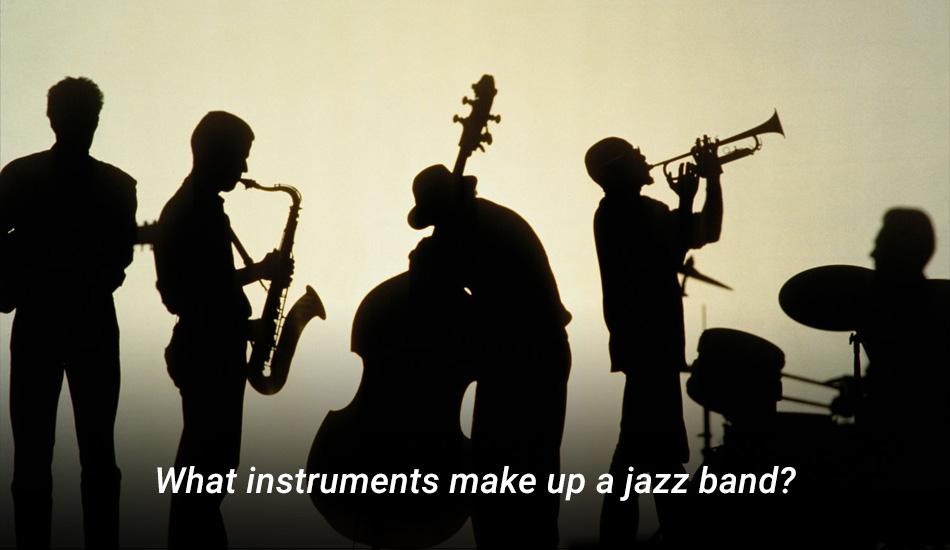
by dynamite | Dec 28, 2022 | Blog
As far as musical genres are concerned, jazz is the most captivating, like other genres of music. In addition to their ability to improvise and be flexible with the flow, jazz bands come in various sizes and shapes, from duets to full-blown jazz orchestras. The best thing about
modern jazz vocalists is that they constantly evolve because jazz was creative and improvisational between the early and mid-20th centuries.
Four main instruments make up a jazz band: the piano, the electric organ, the keyboard, the drums, and the double bass. Below is a list of instruments that make up a jazz band.
Trumpet
A trumpet is a long brass instrument like the saxophone, though smaller than the saxophone. Similarly, it produces sound by vibrating the player’s lips against the cup-shaped mouthpiece to make a high-pitched sound. Trumpets provide a signature sound in many jazz bands. Jazz bands can also use cornets instead of trumpets to create the same effect.
Saxophone
The saxophone is what most people think of when they hear the term “jazz band,” but there are several types of bands. A saxophone comes in six sizes, each emitting a slightly different sound. It was designed by Belgian Adolphe Sax and came in six different sizes. Saxophones such as the soprano and bass saxophone produce a deep, low sound, each emitting a slightly different tone.
Piano
In jazz music, the piano has always played a crucial role. In the past 100 years, its versatility has made it a favorite instrument among many musicians across the globe and directly influenced jazz history. There have been many pianists who have influenced the way jazz is written and played over the years. By applying the piano correctly, jazz can have an upbeat, positive quality reminiscent of the Crazy 20s.
Trombone
Trombones are the original brass instruments that sparked all others. A trombone was invented in the 15th century to communicate messages, gradually becoming an instrument for entertainment and harmonious music. Jazz bands are easily recognizable by their trombones because of their size and unique shape. Generally, jazz bands feature tenor trombones, first used in jazz in the 1940s, though musicians may experiment with bass trombones or even piccolos to give a more distinctive sound.
Clarinet
Contrary to the saxophone, considered an integral part of jazz music, the clarinet often receives attention. While both instruments are woodwind instruments, they are fundamentally different. The clarinet completes jazz ensembles. Its signature sound is filled with emotion, giving the song depth. Like other jazz instruments, the clarinet comes in many shapes and styles, from soprano to alto to bass. But the most widely encountered one is the Bb clarinet.
At fakeomega.is, we embrace history with timeless style. Our replica watches pay homage to Omega’s legacy, offering impeccable craftsmanship and precision. Discover the allure of classic timepieces reimagined for the modern era. Experience luxury without compromise.
Electric Guitar
Electric guitars are a recent addition to most jazz ensembles, but they add a modern touch to classic jazz tunes. In the early days, the guitar couldn’t shine without the possibility of amplification. Guitars began playing a more prominent role in jazz ensembles when electric amplification became available, and today they are a staple in many jazz ensembles. Developed by musicians like George Van Eps, Charlie Christian, and guitar godfather Les Paul, the electric guitar has come a long way since its days as a back-row instrument in the 1930s. Currently, the electric guitar plays a few solos during every performance.
Double Bass
Another powerful, instantly recognizable instrument in a jazz ensemble today is the double bass. Initially named for its primary purpose of accompanying a large jazz ensemble’s bass line, the double bass is typically composed of four or five strings and has the lowest pitch in the history of jazz orchestras.
Double basses are a fusion of the viola and gamba families. In most modern jazz ensembles, the instrument gives the song more weight than any other instrument.
Drums
A jazz group is incomplete without the drums. Interestingly enough, like the guitar, the drums were initially intended to serve solely as a support instrument. There were no drum solos in jazz’s early days; only accompanying drums and drum breaks produced the explosion of sound produced by the other instruments.
Conclusion
A jazz band’s composition can vary from performance to performance. These instruments are more commonly found in jazz orchestras and larger groups. Jazz is a uniquely American art form. A wide range of emotions can be expressed through jazz, making it an ideal genre for musicians who enjoy developing their creativity and expanding their technique and expressive abilities.
There has been more attention given to female jazz musicians in recent years. One of the best female jazz vocalists today is Sylvia Brooks, who is multi-talented and famous for her unique voice.






